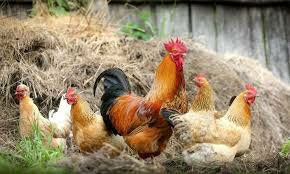ghazi52
PDF THINK TANK: ANALYST

- Joined
- Mar 21, 2007
- Messages
- 102,921
- Reaction score
- 106
- Country
- Location
Pak-China Agriculture Cooperation Forum
Federal Minister National Food Security Sahibzada Muhammad Mehboob Sultan; President of Pakistan Dr. Arif Alvi, Chairman Kashmir Committee Mr. Fakhar Imam, Chinese Ambassador to Pakistan, Chairman CMEC Mr.Zhang Chun, Federal Secretary Ministry of National Food Security & Research Dr. Hashim Popalzai ,senior officials of the Ministry, Importers and exporters and businessmen from both side participated.
President Arif Alvi said that, Pakistan is blessed with natural water resources; we need to use these waters judiciously. Adopting modern technology is one of the important requirements, and we could mutually exchange views in this regard. Moreover we need to focus on the use of quality seed, especially for cotton production and other important crops.
Federal Minister Sahibzada Mehboob Sultan said that, CPEC is the best thing that happened between the two countries. The Agriculture cooperation between the two countries would take this to new heights.This will give ample opportunity to both the countries for strong investment and joint ventures. Our government is working hard to bring better future for the people of Pakistan, said the Federal Minister. He added that the foundation for this extensive agricultural cooperation was laid down during the visit of Prime Minister to China, where he emphasized the importance of strong agricultural ties between the two countires.
Chinese Ambassador Mr. Yao Jing said that we are including Agricultural cooperation as one of the important components in CPEC. This Agriculture cooperation will boost business in two countries.
At the occasion President Arif Alvi, laid the foundation of Pak- China Agriculture exchange center. MoU was also signed between China Machinery Engineering Cooperation and Fatima Fertilizer.
Federal Minister National Food Security Sahibzada Muhammad Mehboob Sultan; President of Pakistan Dr. Arif Alvi, Chairman Kashmir Committee Mr. Fakhar Imam, Chinese Ambassador to Pakistan, Chairman CMEC Mr.Zhang Chun, Federal Secretary Ministry of National Food Security & Research Dr. Hashim Popalzai ,senior officials of the Ministry, Importers and exporters and businessmen from both side participated.
President Arif Alvi said that, Pakistan is blessed with natural water resources; we need to use these waters judiciously. Adopting modern technology is one of the important requirements, and we could mutually exchange views in this regard. Moreover we need to focus on the use of quality seed, especially for cotton production and other important crops.
Federal Minister Sahibzada Mehboob Sultan said that, CPEC is the best thing that happened between the two countries. The Agriculture cooperation between the two countries would take this to new heights.This will give ample opportunity to both the countries for strong investment and joint ventures. Our government is working hard to bring better future for the people of Pakistan, said the Federal Minister. He added that the foundation for this extensive agricultural cooperation was laid down during the visit of Prime Minister to China, where he emphasized the importance of strong agricultural ties between the two countires.
Chinese Ambassador Mr. Yao Jing said that we are including Agricultural cooperation as one of the important components in CPEC. This Agriculture cooperation will boost business in two countries.
At the occasion President Arif Alvi, laid the foundation of Pak- China Agriculture exchange center. MoU was also signed between China Machinery Engineering Cooperation and Fatima Fertilizer.





















